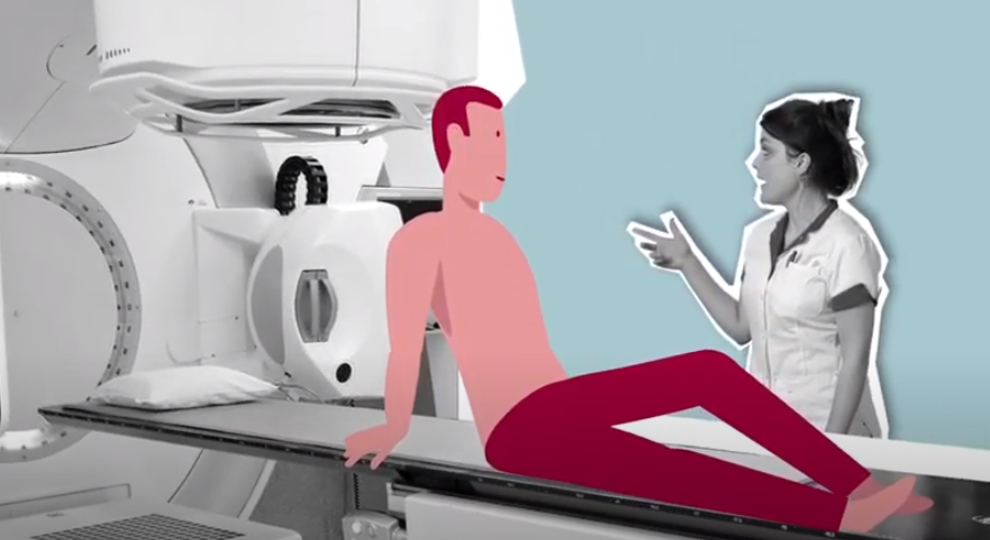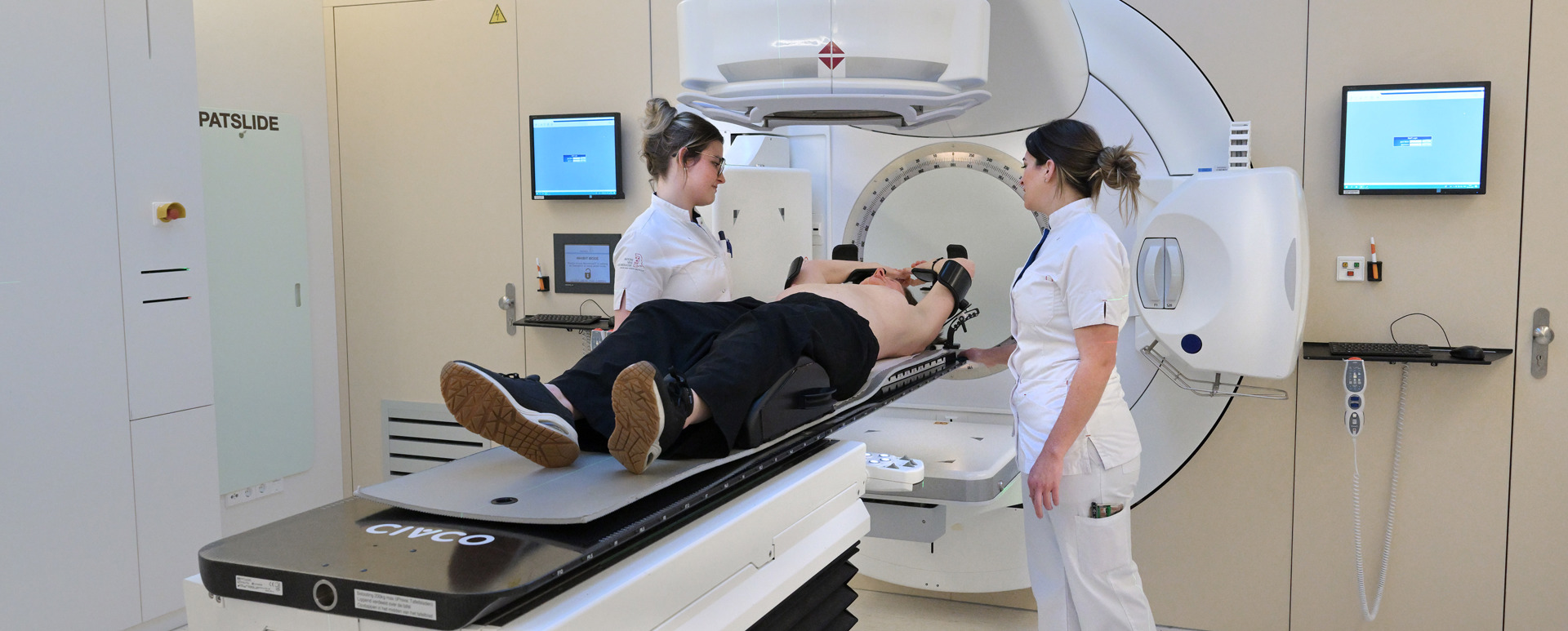Radiotherapy for breast cancer
Radiotherapy for breast cancer usually follows breast-sparing surgery. There is always a risk of tumor cells remaining in the breast, even when the surgeon has properly removed the tumor. By delivering radiation to the breast, we can significantly decrease the risk of new tumor growth in the breast.
We may need to deliver radiation to the glands as well as the breast, or deliver an additional dose to the area that underwent surgery. In rare cases, we need to deliver radiation to the chest wall after a mastectomy.
Deep Inspiration Breath Hold
If you are receiving radiotherapy on your left side, you will receive your treatment through the Deep Inspiration Breath Hold technique: you will hold your breath during the delivery of the radiation dose. This will push the heart backwards into the chest, further away from the radiation field, decreasing the risk of damage. We will practice the technique with you before your treatment.
Our working method
The latest techniques and advanced technology
Our Radiation Oncology Department is constantly working on the development of new techniques using the most advanced technology currently available - both in diagnostic imaging, preparation, and radiation itself. This allows us to deliver the most effective treatment possible to you, while sparing as much healthy tissue as possible.
Consultation with your radiation oncologist
You will meet with your radiation oncologist to discuss your situation and the treatment that best fits you, its goal, expected outcome preparation, execution, and side effects.
Multidisciplinary team meeting
Your situation, test results and medical history will be discussed in a multidisciplinary team meeting consisting of specialists such as gastroenterologists, surgeons, and radiation oncologists, in order to find the treatment that best fits you. Your radiation oncologist will discuss the results with you.
Research
We are constantly working to improve and develop radiation treatment through research. if your radiation oncologist knows of a trial that you may qualify for, he or she will let you know. You will receive more information to make an informed decision. Your participation is voluntary. if you decide not to participate, you will be treated according to the latest protocols and developments.
More information
Preparations
You will get a CT as a preparation for the treatment. You will be taking the same position you would during radiation treatment: on your back. We may administer an iv for a contrast solution. You will receive instructions on how to fill your bladder. Your radiation oncologist will project laser lines on the skin. You will receive small tattooed dots on these lines in order to deliver the radiation to the same spots during your next session.
We will provide information about the treatment during your preparatory consultation. There will be plenty of room to ask questions.
Radiation treatment planning
Your radiation oncologist will draw the placement of the radiation field on these CT and MRI scans. He or she will calculate the optimal external beam radiation using special software: the radiation treatment plan. It is important to ensure that the field receives the correct dose and that the surrounding tissue is spared as much as possible.
Radiation delivery
Radiotherapy lab technicians will ensure that you are positioned correctly on the table. The beams on your body will overlap with the tattooed dots on your body.
We will often check whether your position is still correct by using a CT scanner attached to the machine. This allows us to make small adjustments to your position in order to ensure that the radiation matches the tumor shape as closely as possible. The lab technicians will follow the treatment on monitors.
If you are receiving radiotherapy to your left breast, the radiation lab technicians will give you further breathing instructions.
The radiation machine has enough range to fully revolve around you, in order to find the right angle for the treatment.
The delivery of the radiation itself will take a few minutes. The total time of the treatment will be approximately 15 minutes. The beams won’t hurt, although you will start to notice the effects of the radiation.
Check-ups with your radiation oncologist or physician assistant
During your treatment you will regularly meet with your radiation oncologist to discuss the progress and to ask any questions you may have. Your radiation oncologist will offer advice on how to deal with the side effects you are experiencing and prescribe medication if needed. You will also hear about the next step after your treatment.
Side-effects
The side-effects you will experience depend on your personal situation, overall shape and health, and the area that is receiving the treatment. Your practicing physician will discuss which side-effects you can expect with you.
You may notice the acute side-effects after two or three weeks of treatment. These will increase in severity over the course of your treatment and may linger for months after its end. Some side-effects may be permanent. Your practicing physician can tell you which side-effects you can expect. The skin of your breast may look red. Your physician can prescribe you a cream. You may also experience fatigue.
What you can do
If your symptoms, situation, and overall health allow, we recommend daily exercise to improve your recovery. You could consider walking or biking, or exercise under the supervision of a physical therapist. We also recommend continuing your day to day activities as much as possible.
General nutritional guidelines apply during treatment.
Please consult your practicing physician if you wish to continue taking additional vitamins or supplements during your treatment.
Follow-up care
If you would like extra care during or after your treatment, please ask your radiation oncologist or physician assistant to the NKI Survivorship Center. Our physical therapists, occupational therapists, social workers, and psychologists are experienced in care for cancer patients and would love to offer additional support during and after your treatment.

 nl
nl
 Nederlands
Nederlands
